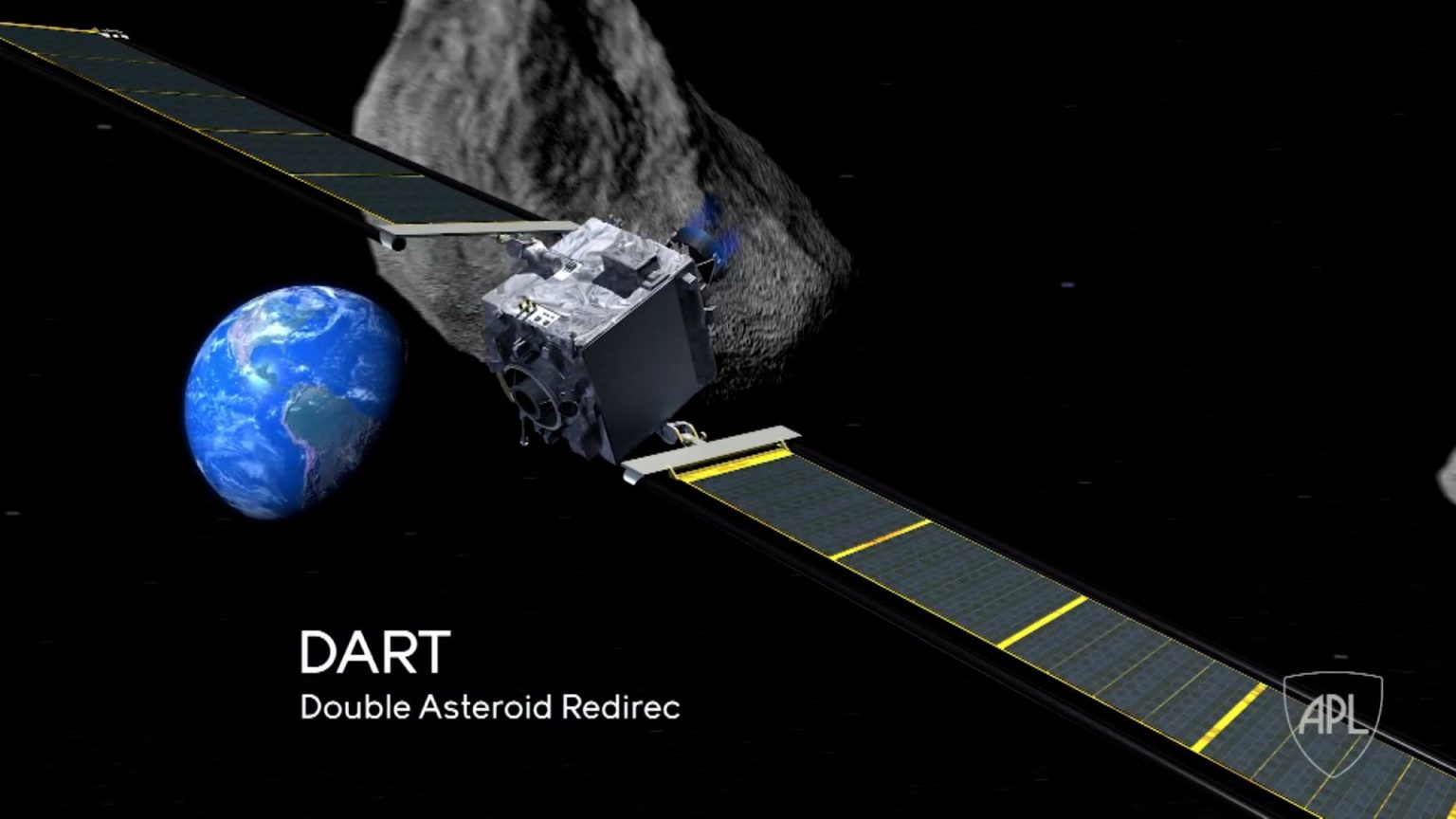NASA’s DART mission continues to yield fascinating results as planetary researchers closely analyze the aftermath of the unprecedented asteroid experiment. In this groundbreaking mission, NASA deliberately crashed a sacrificial spacecraft into an asteroid named Dimorphos, located a staggering 7 million miles from Earth.
The objective was to demonstrate humanity’s capability to alter the course of a potentially hazardous asteroid that might pose a threat to our planet. The successful outcome proved that such an endeavor is possible, raising hopes for potential asteroid deflection strategies in the future.
Now, scientists are diligently studying the event’s aftermath to gain critical insights into the best methods to change the trajectory or deflect a future incoming asteroid. NASA has recently shared an astounding image captured by the renowned Hubble Space Telescope, which orbits approximately 332 miles above Earth. The image reveals a fascinating “swarm of boulders” resulting from the experimental impact on Dimorphos.
David Jewitt, a planetary scientist at The University of California, Los Angeles, expressed his excitement about the observation, stating, “This is a spectacular observation – much better than I expected.” He elaborated, “We see a cloud of boulders carrying mass and energy away from the impact target. The numbers, sizes, and shapes of the boulders are consistent with them having been knocked off the surface of Dimorphos by the impact.”
The Hubble telescope’s remarkable capability allowed it to capture images of these space boulders despite their incredibly faint appearance. These boulders, ranging in size from three to 22 feet wide, were observed from a distance of millions of miles away.
During the DART mission, the spacecraft hurtled towards Dimorphos at an astonishing speed of 14,000 mph, akin to slamming a vending machine-sized spacecraft into a stadium-sized space rock. Despite the dramatic-sounding impact, the goal was simply to impart a slight nudge to the asteroid. In a real-life asteroid deflection scenario, such a nudge would occur many years or even decades before an imminent collision. This time frame provides ample opportunity to ensure that the asteroid safely misses Earth.
As Andrew Rivkin, a planetary astronomer at the Johns Hopkins University Applied Physics Laboratory and one of DART’s lead scientists, explained last year, a small alteration in an asteroid’s movement over the course of years can result in a significant change in its ultimate trajectory.
However, executing such a deflection strategy requires early detection and knowledge of the incoming asteroid. Encouragingly, astronomers have already identified over 27,000 near-Earth objects, and their detection efforts have been further intensified, with the discovery of approximately 1,500 such objects each year since 2015.
The ongoing success of the DART mission and the discoveries made through this pioneering experiment bring hope and confidence in humanity’s capacity to safeguard our planet from potential asteroid threats. As scientific advancements continue and our understanding of space deepens, researchers are optimistic that humanity will be better equipped to mitigate future asteroid risks effectively.
IMPACT SUCCESS! Watch from #DARTMIssion’s DRACO Camera, as the vending machine-sized spacecraft successfully collides with asteroid Dimorphos, which is the size of a football stadium and poses no threat to Earth. pic.twitter.com/7bXipPkjWD
— NASA (@NASA) September 26, 2022
As the study of the DART mission’s results progresses, scientists are eager to glean as much knowledge as possible to refine and perfect asteroid deflection techniques. Understanding how to divert the trajectory of an incoming asteroid could prove vital in safeguarding Earth from potentially catastrophic collisions in the future.
The successful observation of the “swarm of boulders” resulting from the DART impact on Dimorphos is a testament to the capabilities of modern space technology. The Hubble Space Telescope’s ability to capture such faint and distant images highlights its invaluable role in advancing our comprehension of the cosmos.
Researchers and astronomers are confident that with continued technological advancements, early detection of potentially hazardous near-Earth objects will become even more precise. As a result, we will be better prepared to deploy deflection missions well in advance of any potential collision threat.
While the primary focus of the DART mission was on the scientific aspect of asteroid deflection, the implications extend far beyond planetary defense. The knowledge gained from this experiment could also prove useful in understanding the formation and composition of asteroids, unlocking valuable insights into the early history of our solar system.
NASA’s pursuit of groundbreaking missions like DART demonstrates the agency’s dedication to exploring and protecting our planet and beyond. As we continue to explore the cosmos and confront challenges posed by near-Earth objects, collaborations between various space agencies and research institutions will be crucial in pooling resources and expertise.
With each new discovery, scientists gain a deeper appreciation of the vastness of space and the significance of protecting our home planet. As we venture further into the cosmos, the importance of learning how to mitigate potential threats becomes increasingly evident.
As NASA’s DART mission continues to be a beacon of progress, humanity moves closer to achieving the knowledge and tools necessary to safeguard our planet from the unforeseen dangers lurking in the cosmos. As scientific research and space exploration thrive, the future holds the promise of exciting breakthroughs that will not only reshape our understanding of the universe but also ensure the protection of our precious home, Earth.
